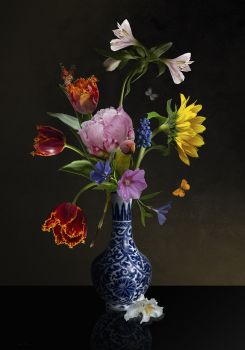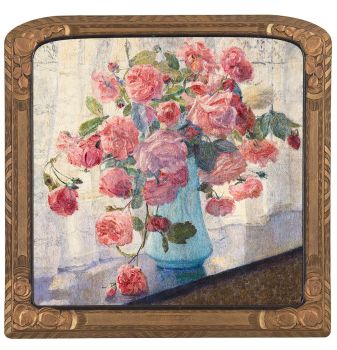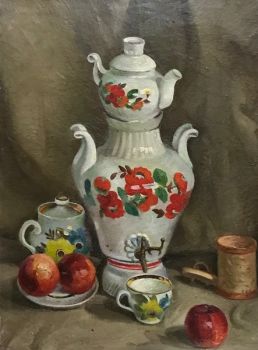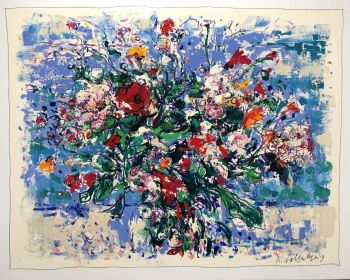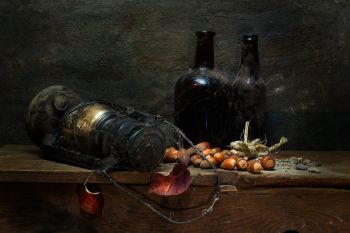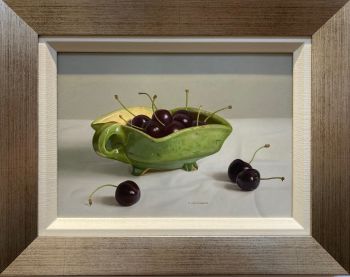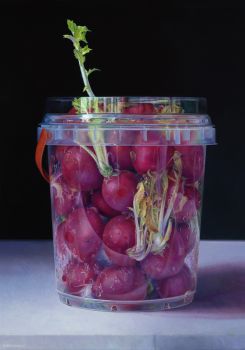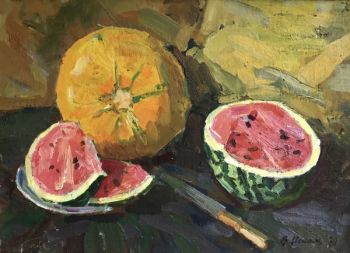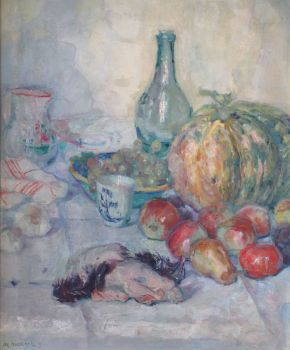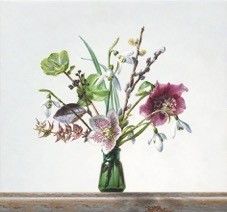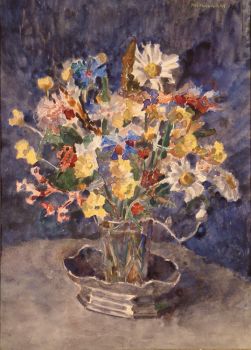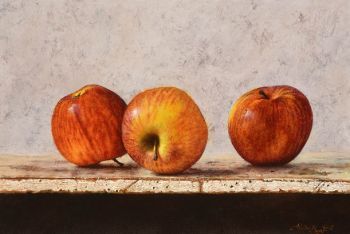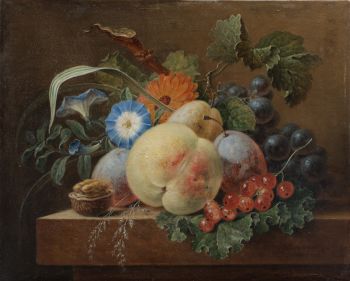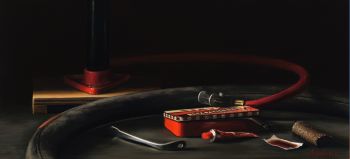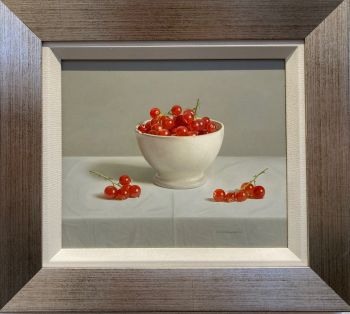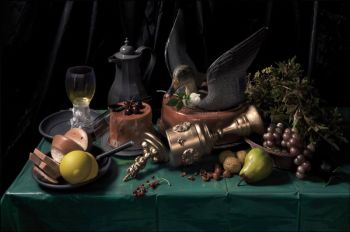A new perspective on 'still life'
The genre of 'still life' is often wrongly underexposed in art. And that while a still life often has more to offer than meets the eye at first glance. Of course, a still life is often simply pleasant to look at and it is often a technical tour de force by the artist. But what many people don't realize is that still lifes often have a deeper, symbolic and sometimes even personal meaning. We will describe in this article what are the typical features of a still life, what is the history and symbolism of the still life. In addition, we will give some examples of different types of modern still lifes, which are for sale in the better galleries today.
Definition of a still life
A 'still life' is a painting, drawing or photo in which the artist has arranged a number of immovable objects and put them together. Hence the name "still-life". A still life usually involves the depiction of inanimate things and, at first sight, everyday objects. For example: glasses, books, vases, jewelry, coins, shells, pipes, and so on.
But that doesn't always have to be the case. Some paintings in this genre, for example, show flowers, a butterfly or a beetle. But in general, the painter or photographer has carefully put a number of objects together, a so-called composition, in an atmosphere that will captivate the viewer.
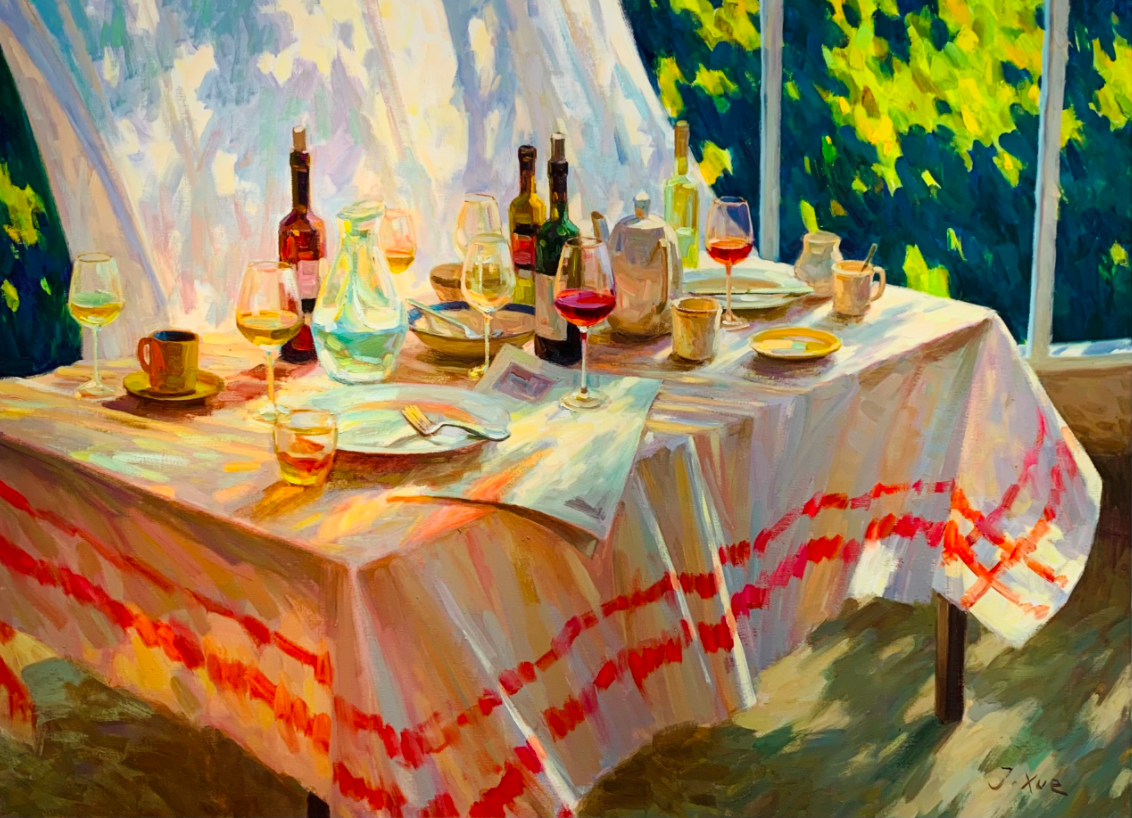 A modern, colorful and summer scene still life, painted by Juane Xue, 'Beginning of the evening' from 2018
A modern, colorful and summer scene still life, painted by Juane Xue, 'Beginning of the evening' from 2018
The history of still life
The first and oldest still lifes we know of were made a long time ago. This concerns, for example, frescoes, murals from the time of the ancient Greeks and Romans who used them to decorate their houses (at that time).
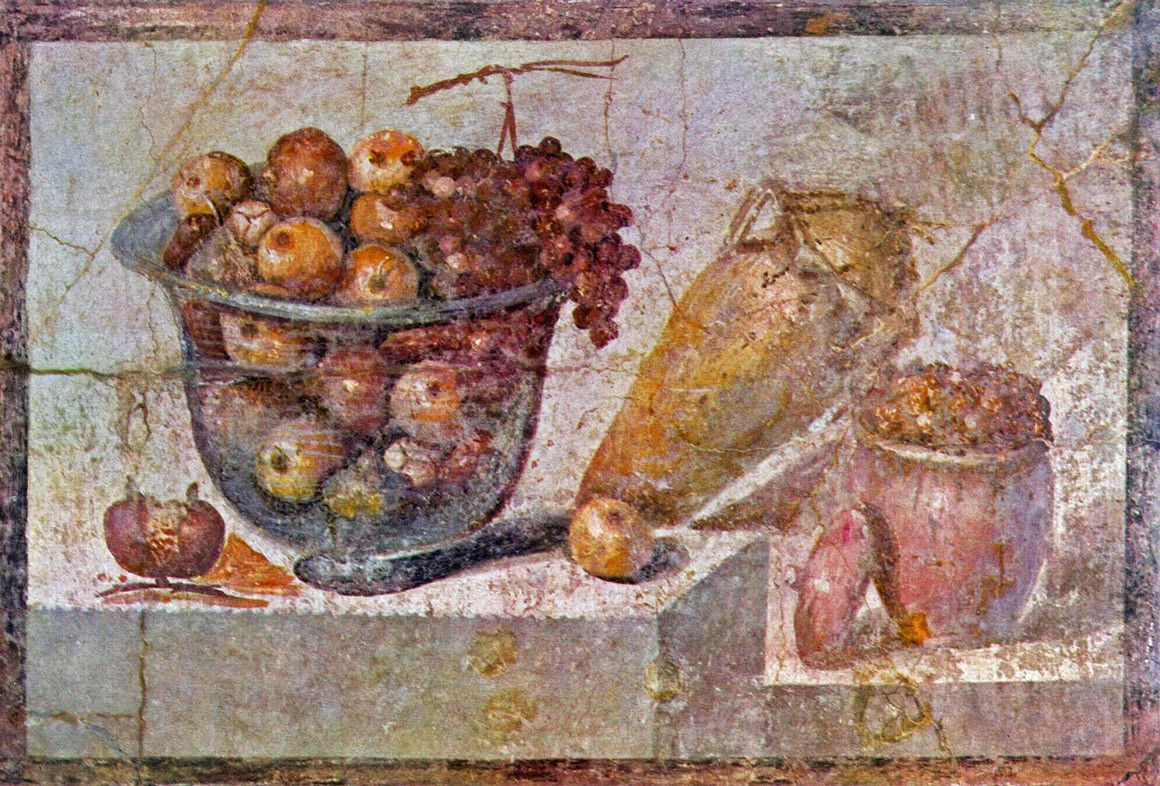 A Roman still life fresco from Pompeii (Julia Felix 70)
A Roman still life fresco from Pompeii (Julia Felix 70)
But in the 16th century, still lifes were mainly used as an exercise for painters in training. This allowed them to work on a true-to-life rendering and on the so-called 'matter expression'. Special attention was paid to the detailed rendering of textures and surfaces. It took quite a while before the genre was really appreciated the way we do today. The interest in still lifes was related to the fact that in the 17th century there was more demand for genre and history paintings and for works in which nature and precious objects were central.
Still lifes were mainly painted in much of Northern Europe, especially in Belgium, England and France. The painters in Flanders in turn influenced the 'Dutch' painters. The 'still life' flourished, especially in Haarlem. Here more attention was paid to still lifes and painters such as Pieter Claesz and Jan Claesz Heda mastered the depiction of fabrics, glasses and light effects on silverware. The painters specialized mainly in the so-called "breakfasts" or "banquets", on which food items such as milk, cheese and bread can be seen. And so 'still life' emerged as a real genre.
 A typical 17th century breakfast still life by the Haarlem artist Pieter Claesz., 'Banquet with cheese and fruit', c. 1623
A typical 17th century breakfast still life by the Haarlem artist Pieter Claesz., 'Banquet with cheese and fruit', c. 1623
In the middle of the 17th century, the Golden Age, there was an enormous demand for these works and the number of 'still life painters' grew with it. The painters specialized in different types of still lifes. For example, after 1650, stately still lifes were painted, much less sober than the breakfasts, with dark colours, lush fruits and exotic objects. Hunting still lifes became popular, as did flower still lifes and vanitas still lifes.
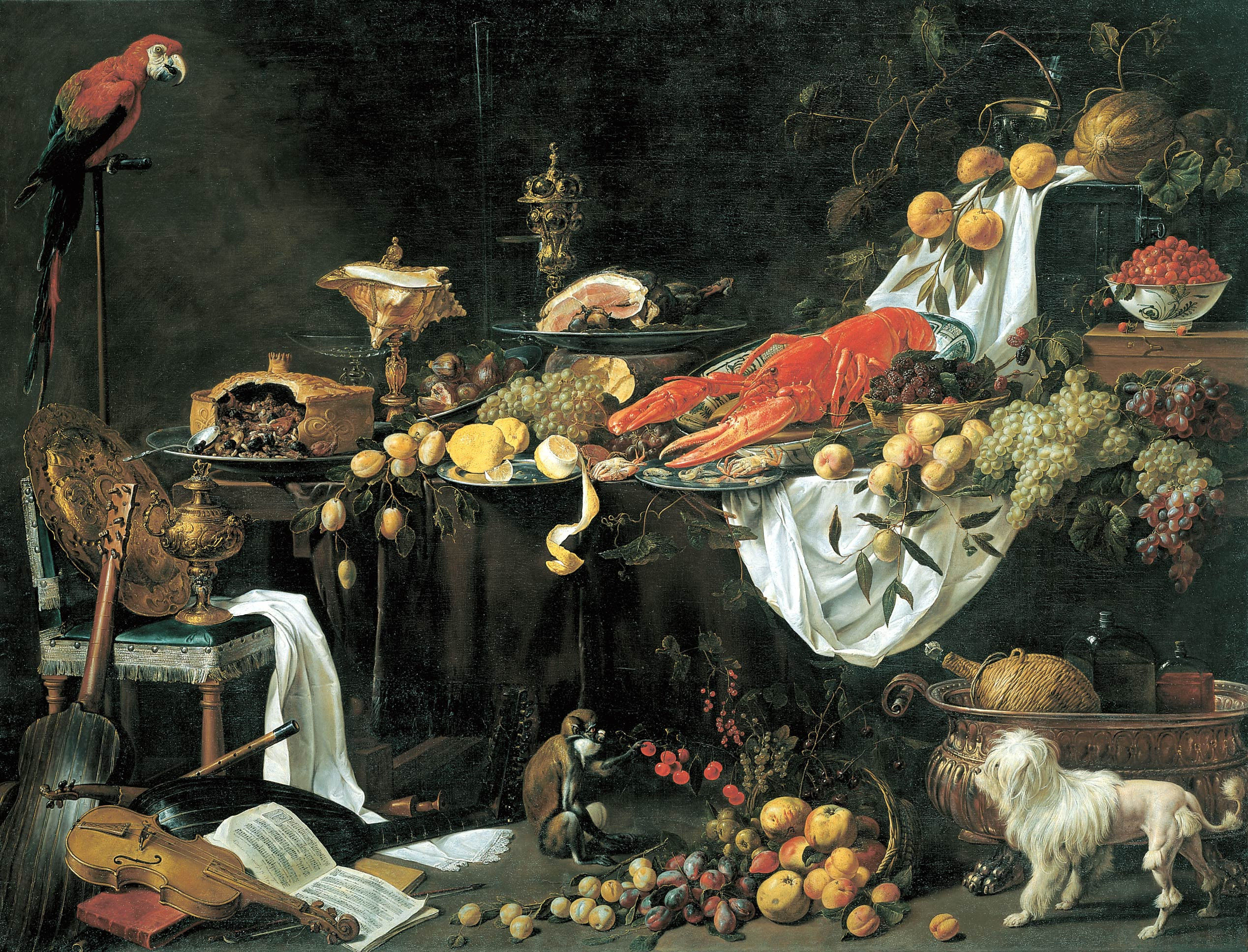 'Banquet Still Life', painted by the Flemish Adriaen van Utrecht in 1644 shows the expertise of the painter, the painting was probably intended for above the mantelpiece because of the low perspective
'Banquet Still Life', painted by the Flemish Adriaen van Utrecht in 1644 shows the expertise of the painter, the painting was probably intended for above the mantelpiece because of the low perspective
Especially in the Netherlands, the painters were specialists in rendering glossy surfaces, luxurious fabrics and other textures. This is well reflected in the hunting still lifes and showpieces, where different types of objects are displayed, such as crystals and silverware, as well as animals, flowers, drinks and fabrics - a rich range of different textures and the painters managed to depict these all as if you could touch them and pick them up.
After all, 'flower still lifes' were very popular. In the beginning, individual flowers were often painted, but soon these became lush and asymmetrical bouquets. For example, more attention was paid to light incidence and depth. These still lifes were expensive, because flowers were rare at that time and a lot of technique was involved in painting flower still lifes. Painters who were technical and skilled enough to render the flowers realistically were lauded all over Europe.
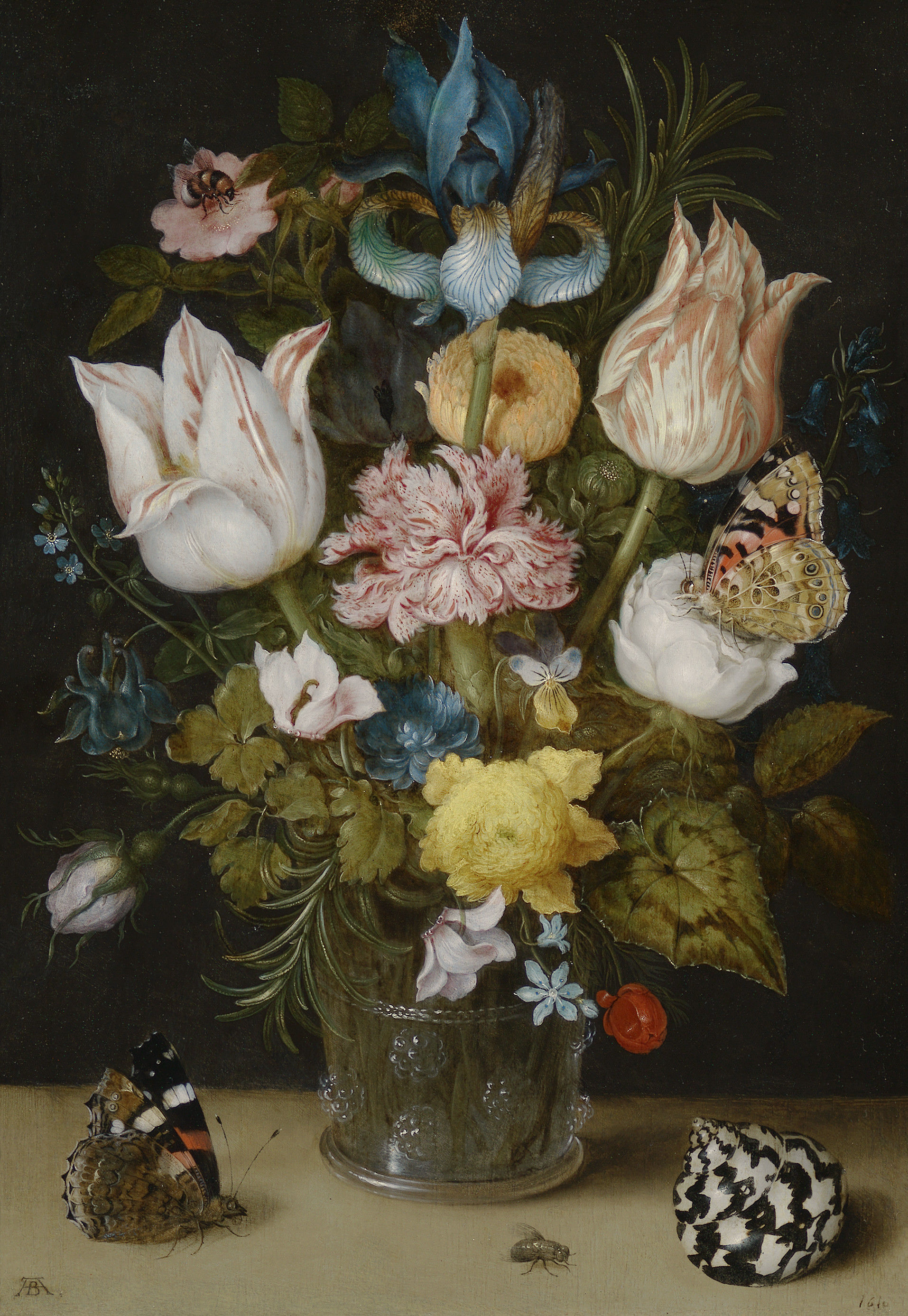 A typical "flower still life" by Ambrosius Bosschaert de Oude, 'Flowers in a Beaker with a Butterfly and a Shell', 1612
A typical "flower still life" by Ambrosius Bosschaert de Oude, 'Flowers in a Beaker with a Butterfly and a Shell', 1612
The hidden message and symbols of a still life
In addition to technique, there is a great deal of symbolism to be discovered in still lifes. The 'austere breakfasts' mentioned earlier often contain a Calvinistic warning against excess and luxury. The so-called 'vanitas still lifes' show the transience of life: wealth and abundance are not important when you die, therefore you should always keep death in mind, this is called “memento mori”. While some things may be obvious, others are ambiguous. A fruit can stand for all kinds of things. A fruit decays quickly, so it could match the vanitas items. See below also a nice example of a 'vanitas still life'.
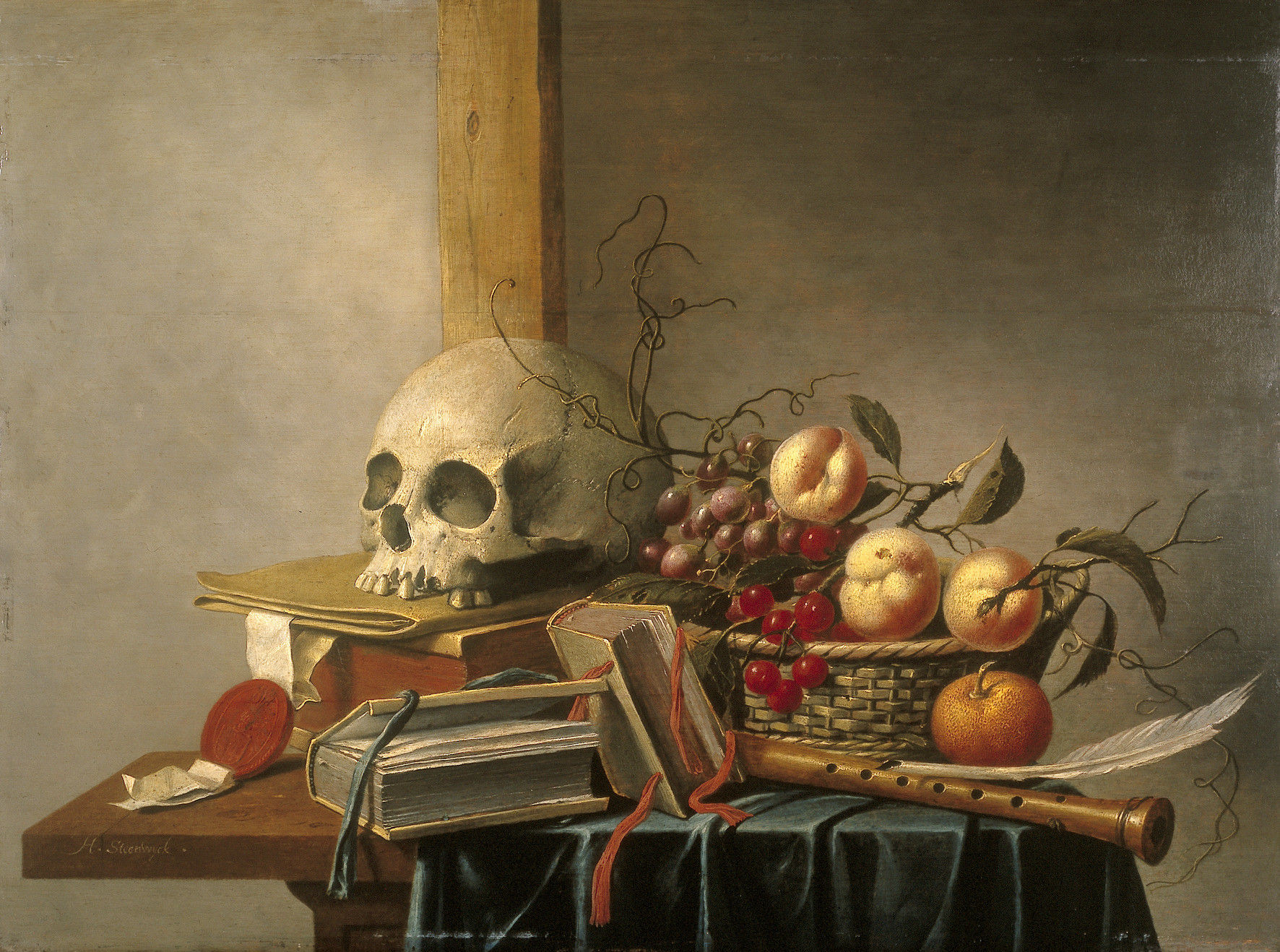 Example of a typical 'vanitas still life' with various symbols by Harmen Steenwijck, ca 1628
Example of a typical 'vanitas still life' with various symbols by Harmen Steenwijck, ca 1628
For example, tropical fruits symbolize wealth, while common fruits symbolize fertility. Books, hourglasses and a globe indicate scientific significance and musical instruments for the fleetingness of life. The combination of objects often also has a meaning.
Modern still lifes
In the 17th and 18th centuries, still lifes were traditional but diverse and there was also a wide spectrum of colourful, dark, austere or opulent still lifes.
At the beginning of the last century and today still lifes are still being made. In these still lifes you also see influences from other art movements. In the 20th century there was a major rise of 'postmodern movements'. There was plenty of experimentation with shape and color.
Still lifes were not depicted as conventionally anymore, but much attention was still paid to the composition and the incidence of light. Nor was there always a deeper meaning to be discovered. See, for example, the still life below.
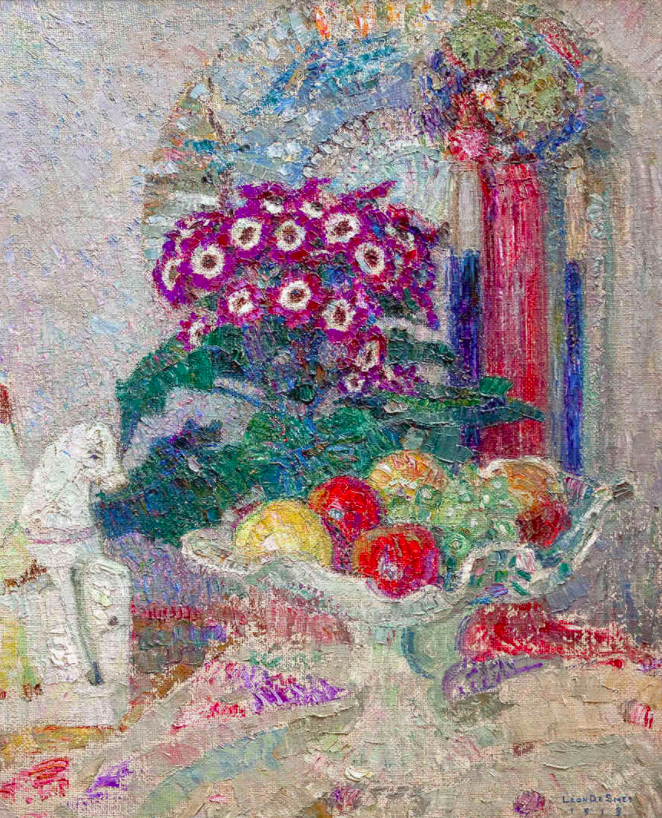 Léon de Smet, 'The flowers, the fruits and the staff', 1909, a fine example of a colorful impressionistic still life from the beginning of the last century.
Léon de Smet, 'The flowers, the fruits and the staff', 1909, a fine example of a colorful impressionistic still life from the beginning of the last century.
Painters from the 19th and 20th centuries brought back movements such as Cubism and Impressionism. Nowadays we see hyperrealism and surrealism in still lifes. In addition, the still lifes still contain messages. These may be traditional, but today these can also be critical messages that hold up a mirror to contemporary society.
Nowadays it is no longer so obvious that a still life is painted, it is becoming increasingly popular to hang photo still lifes in your living room. For example, the still life shows in the header, at the very top called. 'Share my Wing' by Dick Nicolaï, 2016, a good example of a modern still life (photography) that tells a personal and contemporary story with a nod to the past. Even today, still lifes are still 'commissioned' and made to measure.
Another beautiful example of a modern still life can be found below, hereby a typical 17th century and dark atmosphere has been imitated by means of modern photographic techniques.
 A modern still life photographed by Jeroen Luijt, China and the Falcon, 2019
A modern still life photographed by Jeroen Luijt, China and the Falcon, 2019
Should you be interested in multiple still life examples, please visit our extensive collection of modern and contemporary still lifes available via Gallerease online!


